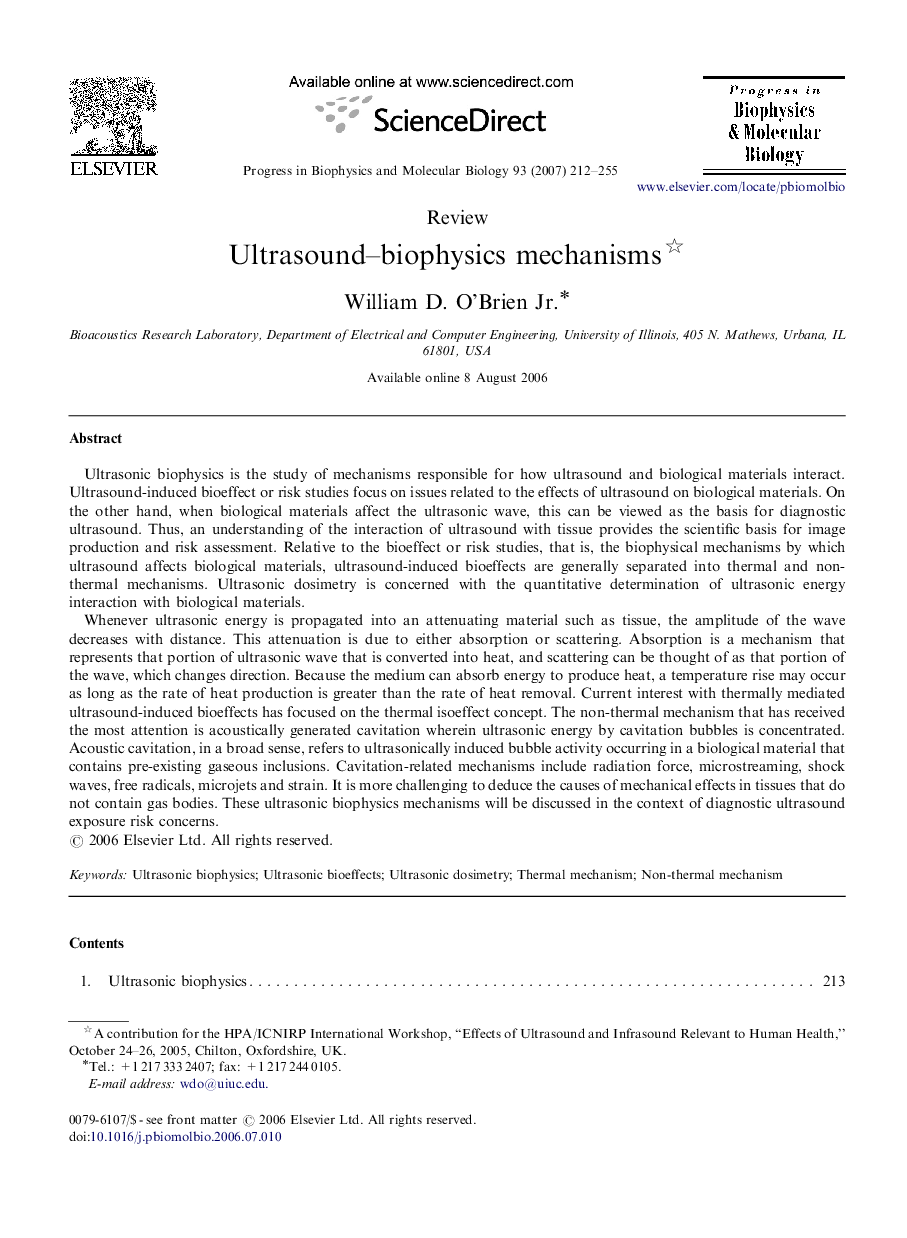| کد مقاله | کد نشریه | سال انتشار | مقاله انگلیسی | نسخه تمام متن |
|---|---|---|---|---|
| 2070496 | 1544499 | 2007 | 44 صفحه PDF | دانلود رایگان |

Ultrasonic biophysics is the study of mechanisms responsible for how ultrasound and biological materials interact. Ultrasound-induced bioeffect or risk studies focus on issues related to the effects of ultrasound on biological materials. On the other hand, when biological materials affect the ultrasonic wave, this can be viewed as the basis for diagnostic ultrasound. Thus, an understanding of the interaction of ultrasound with tissue provides the scientific basis for image production and risk assessment. Relative to the bioeffect or risk studies, that is, the biophysical mechanisms by which ultrasound affects biological materials, ultrasound-induced bioeffects are generally separated into thermal and non-thermal mechanisms. Ultrasonic dosimetry is concerned with the quantitative determination of ultrasonic energy interaction with biological materials.Whenever ultrasonic energy is propagated into an attenuating material such as tissue, the amplitude of the wave decreases with distance. This attenuation is due to either absorption or scattering. Absorption is a mechanism that represents that portion of ultrasonic wave that is converted into heat, and scattering can be thought of as that portion of the wave, which changes direction. Because the medium can absorb energy to produce heat, a temperature rise may occur as long as the rate of heat production is greater than the rate of heat removal. Current interest with thermally mediated ultrasound-induced bioeffects has focused on the thermal isoeffect concept. The non-thermal mechanism that has received the most attention is acoustically generated cavitation wherein ultrasonic energy by cavitation bubbles is concentrated. Acoustic cavitation, in a broad sense, refers to ultrasonically induced bubble activity occurring in a biological material that contains pre-existing gaseous inclusions. Cavitation-related mechanisms include radiation force, microstreaming, shock waves, free radicals, microjets and strain. It is more challenging to deduce the causes of mechanical effects in tissues that do not contain gas bodies. These ultrasonic biophysics mechanisms will be discussed in the context of diagnostic ultrasound exposure risk concerns.
Journal: Progress in Biophysics and Molecular Biology - Volume 93, Issues 1–3, January–April 2007, Pages 212–255